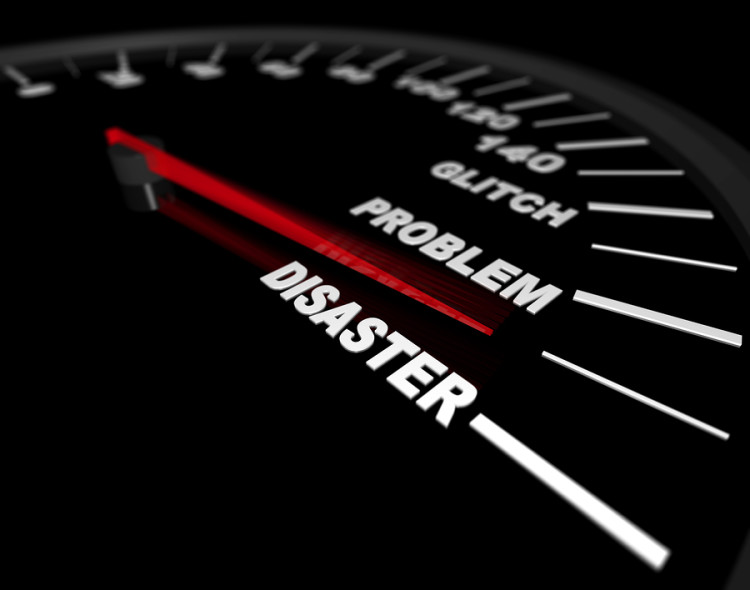Was This a Flash Crash? And Other Questions About Monday’s Swoon

©2015 Bloomberg News
NTM3VM6K50YG
(Bloomberg) — U.S. investors were jittery on Monday morning after fears of an economic slowdown had rocked markets around the world.
Their concern was realized when the Standard & Poor’s 500 Index plunged 5.3 percent in the opening minutes of trading, the biggest intraday loss in four years. It was the start of a roller-coaster ride, as the market bounced up only to fall again. The pattern repeated through the day until the close, when the benchmark finished down 3.9 percent.
Along the way there were wild price swings, trading halts and volatility at levels not seen in years. Things got so bad that former Treasury Secretary Larry Summers took to Twitter to compare the day’s events to previous meltdowns and say, “we could be in the early stage of a very serious situation.”
As investors ponder what it all means, we answer some of the day’s biggest questions.
Was it a flash crash?
The rout on May 6, 2010, was dubbed the flash crash, and it was a shock. Out of nowhere, the stock market lost almost $1 trillion in value before almost immediately recovering most of its losses. While prices fell rapidly Monday, it appeared to be a fair reflection of investor sentiment: Indexes were falling worldwide, led by an 8.5 percent plunge by China’s Shanghai Composite Index, amid concern that the global economy is worsening. There’s also worry that the Federal Reserve will soon raise interest rates, which some think could snarl the six-year bull market for stocks. Reflecting that pessimism, the S&P 500 ended the day with its biggest loss since August 2011. The morning’s plunge wasn’t just a head fake.
Didn’t some stocks crash?
Many stocks opened low, including General Electric Co. and JPMorgan Chase & Co. Within minutes, things got much worse and both GE and JPMorgan were briefly down as much as 21 percent.
What protections were in place?
After the 2010 flash crash, a system of curbs were introduced that are meant to prevent errant trades from driving down prices. Traders aren’t supposed to quote prices outside a certain percentage above and below a stock’s average price. This restriction didn’t kick in for GE, JPMorgan and other stocks early Monday possibly because the acceptable price bands are wider in the first few minutes of the day. The losses — though big — weren’t big enough. By the end of the day, GE and JPMorgan were down by less eye-catching amounts: 2.9 percent and 5.3 percent, respectively.
Were there any trading halts?
Yes, on 1,278 occasions on Monday, a security was paused for 5 minutes, according to the owner of the New York Stock Exchange, which usually sees less than 10 halts per day. Nine hundred and ninety-nine of the halts were on NYSE Arca, which lists more exchange-traded funds than any other market. That suggests that many less-traded ETFs experienced difficulties as the prices of their underlying stocks swung wildly.
“When you wind up with a lot of volatility, you’re going to see that,” especially under new rules put in place after the flash crash, said Larry Tabb, chief executive officer of research firm Tabb Group LLC.
How bad could things have gotten?
If the S&P 500 had fallen 7 percent before 3:25 p.m. New York time, the entire stock market would have shut for 15 minutes. It only got to a 5.3 percent decline. A 13 percent loss would have prompted another 15-minute pause, while a 20 percent plunge would have shut the market for the rest of the day.
Was the rest of the day smooth?
Not really. The market’s most famous measure of expected price swings — or, probably more accurately, a gauge of fear — reached a level last seen in October 2011 as investors panicked. Things were so extreme at the start of the day that the measure, the called the Chicago Board Options Exchange Volatility Index, or VIX, couldn’t be calculated during the first half hour of trading.
Were there any malfunctions at exchanges?
More than 14 billion shares traded, way above the past year’s daily average of 6.6 billion and the greatest amount since June 26. Despite the pressures caused by volumes and volatility not seen for years, there were no reported breakdowns. That should be a relief to exchange executives who’ve come under fire from regulators and the trading public for a series of mishaps in recent years.
To contact the reporter on this story: Sam Mamudi in New York at smamudi@bloomberg.net To contact the editor responsible for this story: Nick Baker at nbaker7@bloomberg.net







No Comment